Today, with the sun shining here in Washington state, it seems to be a good day to discuss my progress at University of Nebraska Lincoln on my retirement* PhD program in the School of Natural Resources. The short version of the story is that everything is going well. I work closely with my adviser, Dr. Troy Gilmore, on research for my dissertation–we talk almost every day. We have an academic poster in progress and have enough research results for at least one scholarly article. The more we talk about what we are doing, the more we believe we are onto something that will be of interest to a lot of people in the world of hydrology.
What we are doing is figuring out a way to measure the water level in images of streams and rivers when normally available data from the United States Geological Survey is available at the site where the images were captured. We have done a literature review and it appears no one has attempted what have already accomplished. That is a good thing. So, my non-retirement, retirement PhD proceeds ahead full bore. The plan is to finish our first pass at the research, publish a poster and a paper or two, then when I retire, take classes to catch me up on the highly technical aspects of Natural Resources Science and Hydrology about which I know absolutely nothing before finishing the writing of a thesis based on research we have pretty much completed (with a few small nooks and crannies we need to fill in).
*Scheduled to retire and go full time on the PhD within about two years if COVID-19 does not foul up our plans.


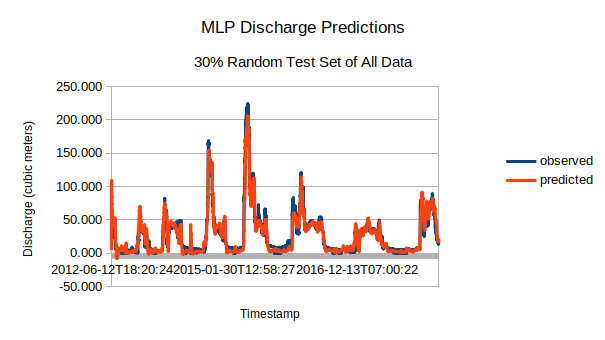


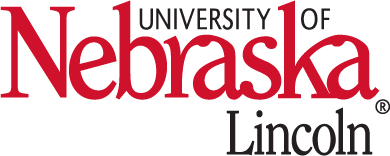

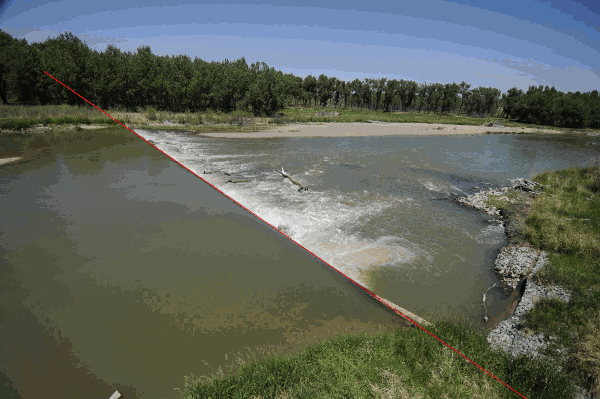

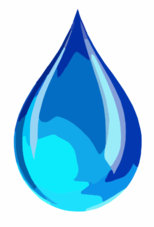 It has been a month or so since I have provided an update on the Retirement PhD/GaugeCam projects–they are kind of tied to each other. Everything is not complete (I think we are about halfway there), but everything that is complete has been up and running for over a month on two separate computers: 1) A Raspberry Pi and 2) a plain vanilla Ubuntu Server. The plan for over the holidays was to jump back in and see if I could get the project to the point where we could do a beta deployment, but that was not to happen–suffered a minor setback due to a cold. So, now I am talking to my buddy John H. down in Arizona (well, up actually, if we are talking altitude and not global direction). Hopefully, I can get him on the project, partially because he is a profoundly better embedded programmer than me and partially because it is a lot more fun to do this kind of thing with a friend. We are still on a long slow approach to entry into a PhD program, but it is still on track. We have added two new sets of functionality that will be required for the GaugeCam work and John will be perfect for that if he has time to do it.
It has been a month or so since I have provided an update on the Retirement PhD/GaugeCam projects–they are kind of tied to each other. Everything is not complete (I think we are about halfway there), but everything that is complete has been up and running for over a month on two separate computers: 1) A Raspberry Pi and 2) a plain vanilla Ubuntu Server. The plan for over the holidays was to jump back in and see if I could get the project to the point where we could do a beta deployment, but that was not to happen–suffered a minor setback due to a cold. So, now I am talking to my buddy John H. down in Arizona (well, up actually, if we are talking altitude and not global direction). Hopefully, I can get him on the project, partially because he is a profoundly better embedded programmer than me and partially because it is a lot more fun to do this kind of thing with a friend. We are still on a long slow approach to entry into a PhD program, but it is still on track. We have added two new sets of functionality that will be required for the GaugeCam work and John will be perfect for that if he has time to do it.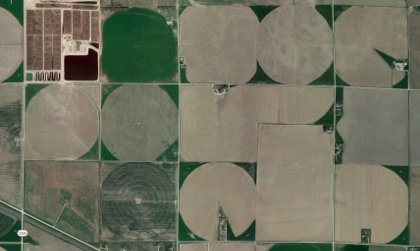 I traded emails with my friend Troy today. We are making a plan to investigate a way to determine the toxicity of the water in agricultural settings by looking at satellite or drone images in a super secret way. It involves both imaging and knowledge of water chemistry. This is one idea we have for my doctoral research (if I actually to that). I am excited. Tomorrow I will write a couple of paragraphs for a proposal that explains my part of this work for a funding proposal that will allow us to gather data to do this. The whole retirement PhD thing continues to inch forward.
I traded emails with my friend Troy today. We are making a plan to investigate a way to determine the toxicity of the water in agricultural settings by looking at satellite or drone images in a super secret way. It involves both imaging and knowledge of water chemistry. This is one idea we have for my doctoral research (if I actually to that). I am excited. Tomorrow I will write a couple of paragraphs for a proposal that explains my part of this work for a funding proposal that will allow us to gather data to do this. The whole retirement PhD thing continues to inch forward.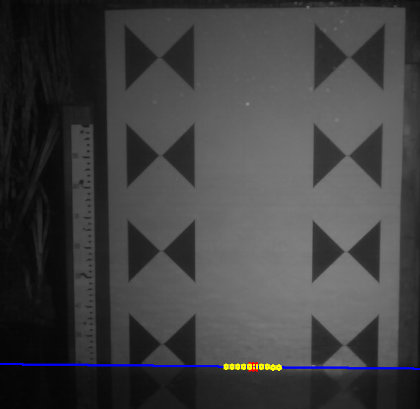 This is the first time in years that I have taken a vacation to do just… nothing. Well, not nothing because I have made great progress on the reboot of GaugeCam–the camera based water level measurement system developed in conjunction with professors from NCSU and UNL. I think I am about halfway to the point where we will be able to start hosting water level cameras in the wild again. Today, I was able to implement some new methods to automatically find the water level by evaluating vertical swaths of the area between the bowtie targets shown in the image above. This is a really good, new thing in that the only thing necessary to set up the camera is to tell the system the x-y position of the individual bow ties in the system after the camera is mounted and pointed at the bow tie target. This is much easier than the previous system where it was necessary to follow an elaborate procedure to tell the system how and where to look for the water level. Hopefully, we will be able to publish a paper on how we do this that will help me in my PhD program if I ever get accepted and pull the trigger to do it. I am getting very much closer on all that and have hope it will happen.
This is the first time in years that I have taken a vacation to do just… nothing. Well, not nothing because I have made great progress on the reboot of GaugeCam–the camera based water level measurement system developed in conjunction with professors from NCSU and UNL. I think I am about halfway to the point where we will be able to start hosting water level cameras in the wild again. Today, I was able to implement some new methods to automatically find the water level by evaluating vertical swaths of the area between the bowtie targets shown in the image above. This is a really good, new thing in that the only thing necessary to set up the camera is to tell the system the x-y position of the individual bow ties in the system after the camera is mounted and pointed at the bow tie target. This is much easier than the previous system where it was necessary to follow an elaborate procedure to tell the system how and where to look for the water level. Hopefully, we will be able to publish a paper on how we do this that will help me in my PhD program if I ever get accepted and pull the trigger to do it. I am getting very much closer on all that and have hope it will happen. I think it is a mercy that one tends to forget how lazy and irresponsible they were in their youth. That is certainly true for me. I took and odd trajectory to get to my Masters of Science degree. It started with a really bad undergraduate degree in Marketing–I do not have the transcript I ordered yet, but I am cringing just thinking about it. That was followed by a thoroughly mediocre (3.00 GPA from a pretty good tech school–the first transcript to arrive), but that should have been profoundly better had I been paying attention. I started out well, but then fell off the wagon for whatever reason. That I got was accepted into graduate school for a PhD and an MS, both in Engineering is almost miraculous. Well the PhD was less miraculous because by the time I did my MS, the blood had started flowing back to my brain and I did a good job. That will be a story for when my other transcripts arrive.
I think it is a mercy that one tends to forget how lazy and irresponsible they were in their youth. That is certainly true for me. I took and odd trajectory to get to my Masters of Science degree. It started with a really bad undergraduate degree in Marketing–I do not have the transcript I ordered yet, but I am cringing just thinking about it. That was followed by a thoroughly mediocre (3.00 GPA from a pretty good tech school–the first transcript to arrive), but that should have been profoundly better had I been paying attention. I started out well, but then fell off the wagon for whatever reason. That I got was accepted into graduate school for a PhD and an MS, both in Engineering is almost miraculous. Well the PhD was less miraculous because by the time I did my MS, the blood had started flowing back to my brain and I did a good job. That will be a story for when my other transcripts arrive.